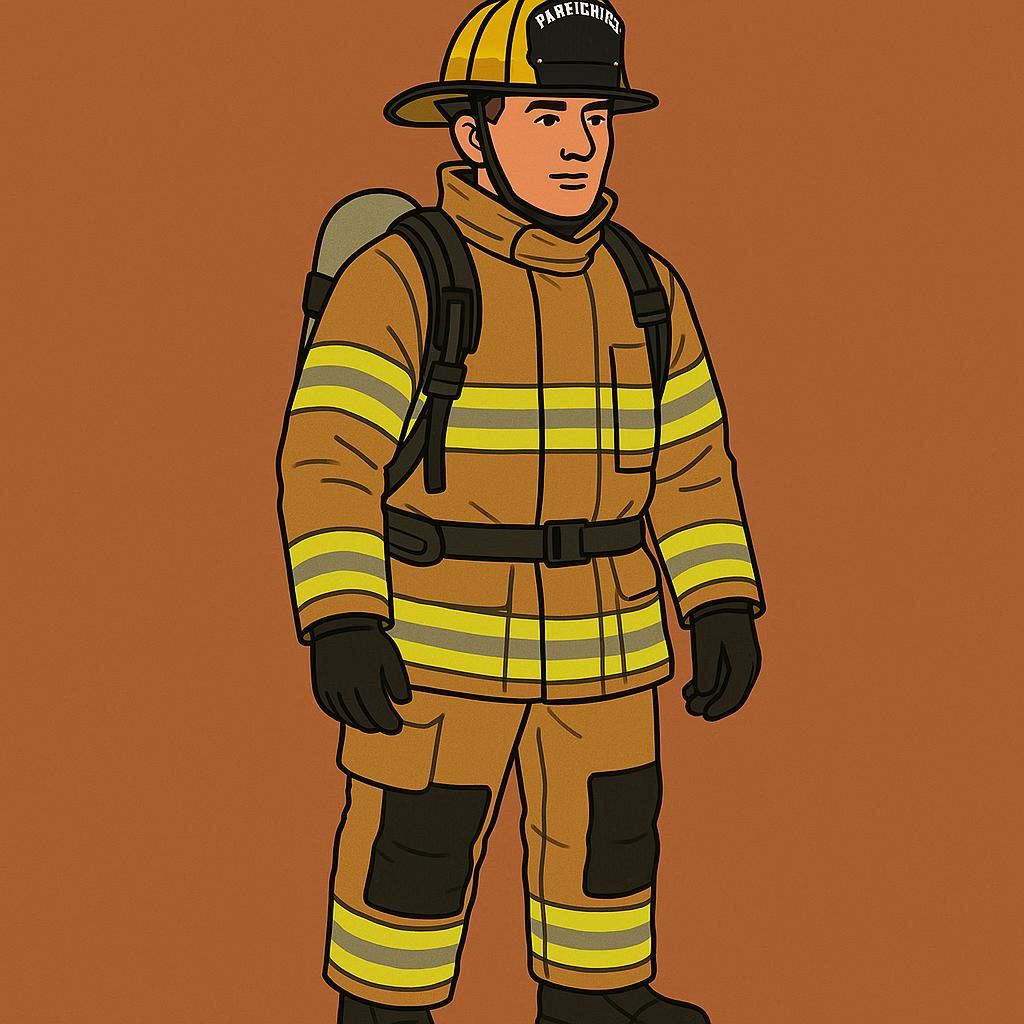
As a seasoned firefighter, I know the crucial role that turnout gear plays in keeping us safe on the job. From the moment we suit up, our gear becomes our shield against the intense heat and hazardous materials we face. But what exactly is firefighter turnout gear and why is it so essential? Let’s dive into the details.
Firefighter turnout gear is not just a uniform – it’s a meticulously designed ensemble crafted to withstand extreme conditions. From the protective outer shell to the moisture-wicking layers underneath, every component serves a vital purpose. Understanding the components and functions of this gear is key to appreciating the level of protection it provides. Let’s explore the elements that make up this critical gear.
Key Takeaways
- Firefighter turnout gear is meticulously designed to provide essential protection against extreme heat, flames, sharp objects, and hazardous materials.
- Understanding the components of turnout gear, such as the outer shell, moisture barrier, thermal liner, and reflective trim, highlights the crucial role each element plays in ensuring firefighter safety.
- Reliable turnout gear is not just a luxury but a necessity for firefighters to confidently face challenging situations and carry out their mission effectively.
- The Protective Outer Shell is a critical component of turnout gear, offering defense against flames, heat, and environmental hazards while ensuring durability and longevity.
- Moisture-wicking layers in turnout gear are crucial for enhancing comfort, regulating body temperature, and reducing the risk of heat stress during firefighting missions.
- Investing in high-quality turnout gear with advanced features like moisture-wicking technology is essential for maximizing comfort, safety, and performance in high-risk firefighting environments.
The Importance of Firefighter Turnout Gear
When it comes to firefighter turnout gear, its importance cannot be overstated. Firefighter turnout gear is not just a simple uniform – it is a vital piece of equipment that can mean the difference between life and death in high-intensity situations. As a firefighter, my turnout gear is my shield, protecting me from extreme heat, flames, sharp objects, and hazardous materials.
The design and construction of firefighter turnout gear are meticulously thought out to ensure maximum protection for firefighters. Each component, from the outer shell to the moisture barrier and thermal liner, plays a crucial role in safeguarding firefighters from various dangers they may encounter while on duty. Understanding the significance of each element in turnout gear emphasizes the level of safety and security it provides to firefighters like myself.
In the unpredictable and dangerous environment of firefighting, reliable turnout gear is not just a luxury – it is a necessity. A well-equipped firefighter, clad in proper turnout gear, can confidently face the most challenging situations, knowing that they are adequately protected. For me, having trustworthy turnout gear is more than just a comfort – it is essential for my safety and the success of my mission to protect lives and property.
Components of Firefighter Turnout Gear
When it comes to firefighter turnout gear, each piece plays a crucial role in providing protection and safety in high-risk situations. Here are the essential components that make up this life-saving gear:
- Outer shell: It’s the first line of defense against flames, sharp objects, and heat. The durability and heat resistance of the outer shell are vital for shielding firefighters from burns and injuries.
- Moisture barrier: This layer acts as a shield against water, blood, and other liquids. It helps keep firefighters dry and protected, preventing potential infections or burns from hazardous substances.
- Thermal liner: Designed to withstand high temperatures, the thermal liner provides an additional barrier of protection against extreme heat and flames. It helps regulate the firefighter’s body temperature, minimizing the risk of heat stress and burns.
- Reflective trim: This component enhances visibility in low-light conditions, making it easier for firefighters to be seen during rescue operations or emergency situations. Improved visibility can prevent accidents and ensure the safety of the firefighting team.
Each of these components is carefully crafted and integrated into the turnout gear to ensure maximum safety and performance for firefighters in the line of duty. The combination of these elements creates a comprehensive protective ensemble that allows firefighters to focus on their mission of saving lives and protecting communities without compromising their safety.
Protective Outer Shell
When it comes to firefighter turnout gear, the Protective Outer Shell plays a crucial role in safeguarding firefighters from various hazards. This outer layer is typically made from durable and flame-resistant materials such as aramid fibers or blends of synthetic materials.
The outer shell is designed to provide defense against flames, heat, sharp objects, and other environmental hazards that firefighters may encounter during their operations. It serves as the first line of defense, shielding the firefighter’s body from direct exposure to fire and extreme temperatures.
One key feature of the Protective Outer Shell is its ability to withstand high heat without compromising its integrity, allowing firefighters to work in intense heat environments safely. The outer shell is also designed to be water-resistant to prevent moisture from penetrating through the gear, keeping the firefighter dry and comfortable during firefighting operations.
Additionally, the outer shell is often equipped with reinforcements in high-wear areas to ensure durability and longevity. This helps extend the lifespan of the gear, making it a reliable and long-lasting piece of equipment for firefighters to rely on in the line of duty.
The Protective Outer Shell is a critical component of firefighter turnout gear, providing essential protection against flames, heat, sharp objects, and other hazards encountered during firefighting operations. Its durability, flame resistance, and water resistance make it a vital element in ensuring the safety and performance of firefighters in high-risk situations.
Moisture-Wicking Layers
When it comes to firefighter turnout gear, moisture-wicking layers play a crucial role in enhancing comfort and safety during firefighting missions. These specialized layers are designed to efficiently wick away sweat and moisture from the body, keeping firefighters dry and comfortable even in intense heat and physically demanding situations.
Moisture-wicking fabrics are strategically incorporated into the turnout gear to help regulate body temperature and prevent overheating. By drawing moisture away from the skin, these layers help prevent discomfort, chafing, and the development of skin irritations. This is particularly important during prolonged firefighting operations where comfort and mobility are essential for optimal performance.
The use of moisture-wicking technology in firefighter turnout gear not only enhances comfort but also plays a key role in reducing the risk of heat stress. By keeping firefighters dry and cool, these layers contribute to overall well-being and safety on the fireground. Additionally, they help maintain the integrity and effectiveness of other protective layers by minimizing moisture absorption.
Investing in high-quality turnout gear with advanced moisture-wicking properties is essential for ensuring the well-being and performance of firefighters in challenging environments. By prioritizing the integration of moisture-wicking layers, we can enhance comfort, safety, and overall effectiveness during fire suppression activities.
Conclusion
Understanding the importance of moisture-wicking layers in firefighter turnout gear is crucial for enhancing comfort and safety during fire suppression activities. These specialized layers play a vital role in regulating body temperature, preventing overheating, and reducing the risk of heat stress. By investing in high-quality turnout gear with advanced moisture-wicking properties, firefighters can ensure their well-being and performance on the fireground. Prioritizing gear that efficiently removes sweat and moisture not only enhances overall comfort but also contributes to the effectiveness of firefighting operations. Remember, staying dry and cool is key to facing the challenges of the fire service with confidence.
Frequently Asked Questions
What is the significance of moisture-wicking layers in firefighter turnout gear?
Moisture-wicking layers play a crucial role in enhancing comfort and safety for firefighters by efficiently removing sweat and moisture, regulating body temperature, and preventing overheating.
How do moisture-wicking layers contribute to firefighters’ well-being on the fireground?
By keeping firefighters dry and cool, moisture-wicking layers reduce the risk of heat stress and contribute to overall well-being during fire suppression activities.
Why is investing in high-quality turnout gear with advanced moisture-wicking properties important?
Investing in high-quality turnout gear with advanced moisture-wicking properties is essential for ensuring firefighters’ well-being and performance in challenging fire suppression scenarios.
